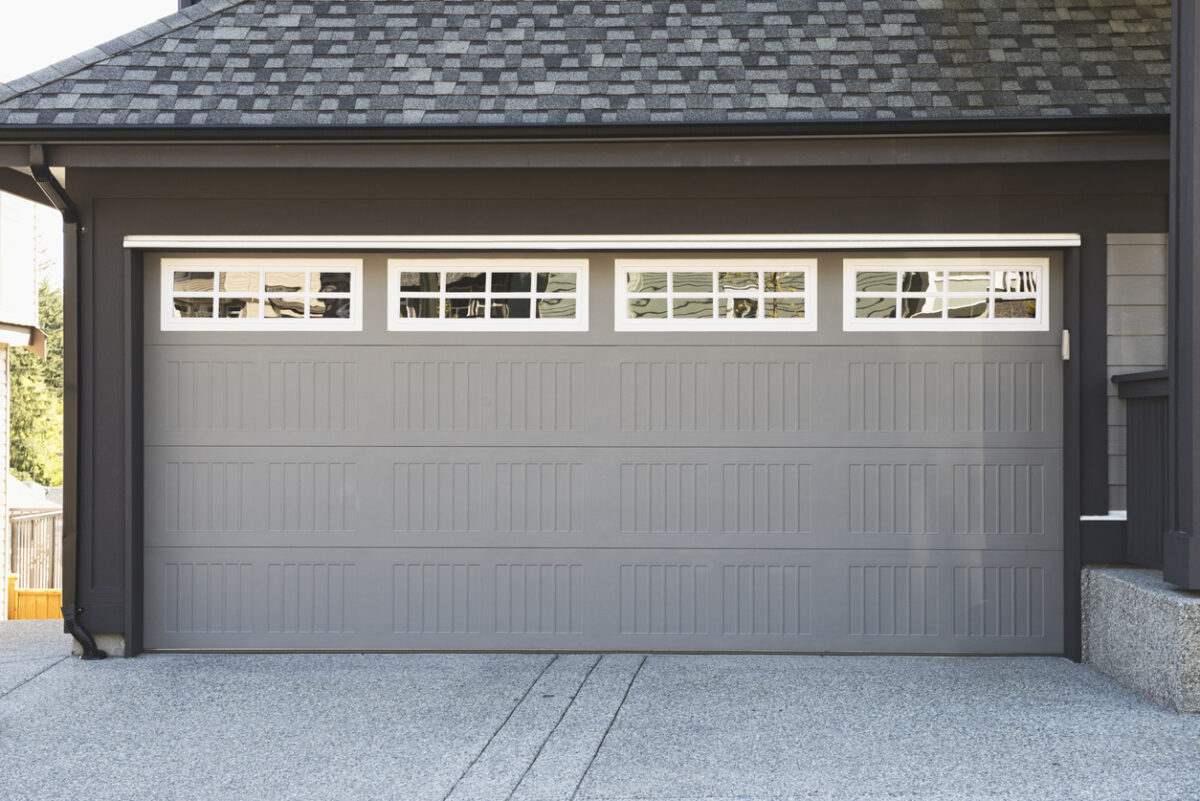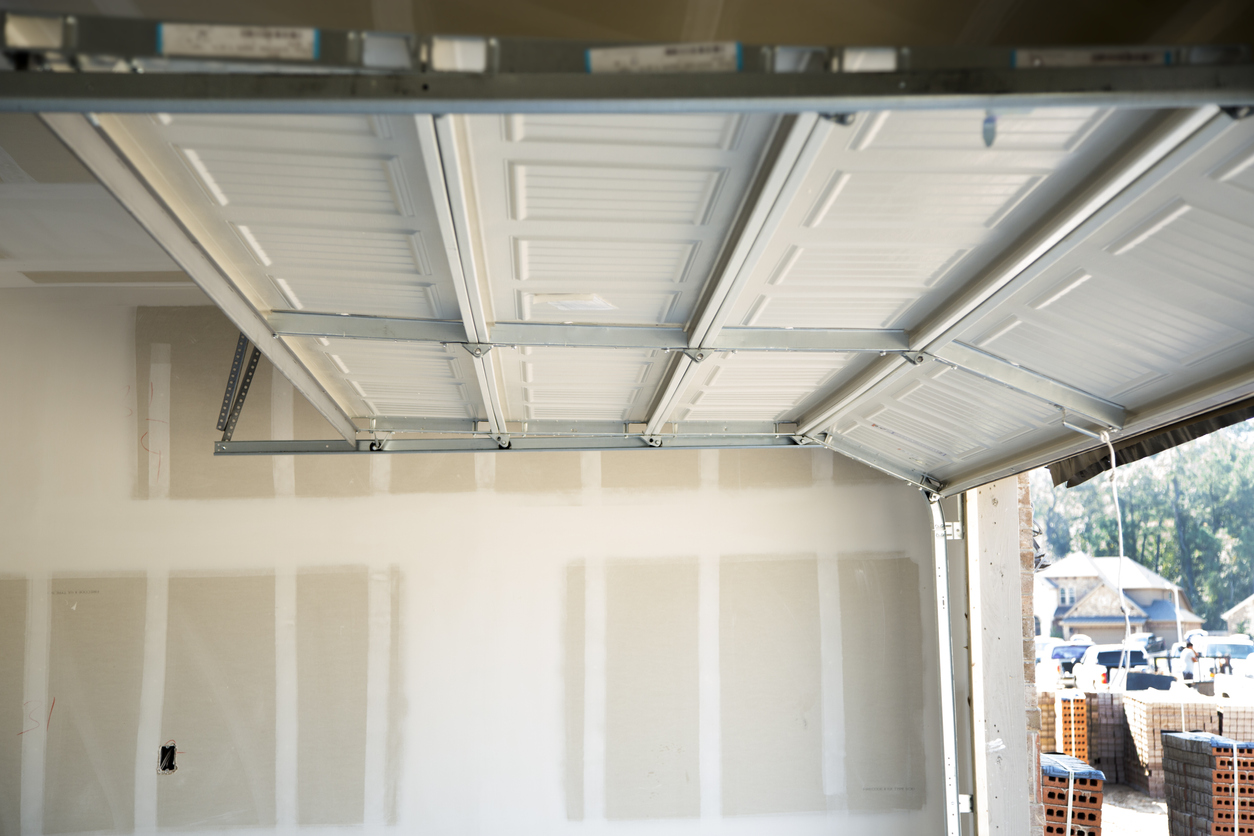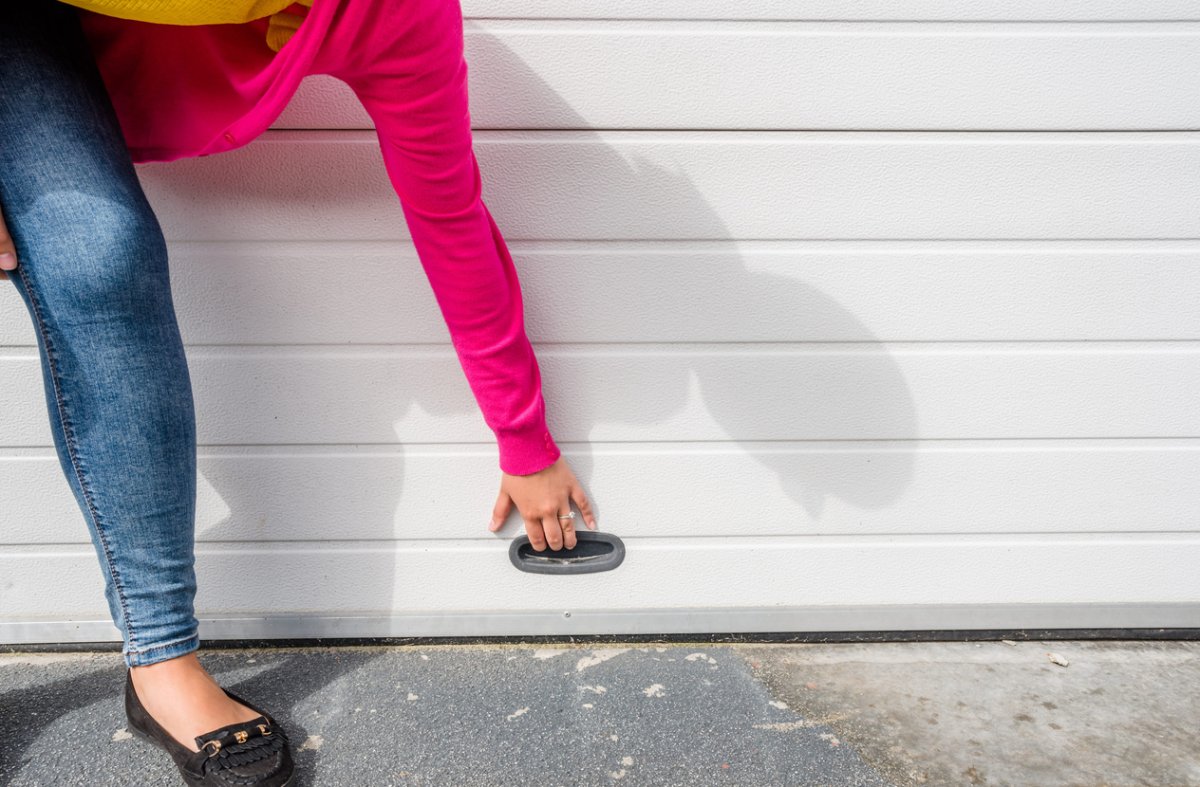We may earn revenue from the products available on this page and participate in affiliate programs. Learn More ›
An automatic garage door opener saves a lot of time and effort while ensuring the security of your vehicles, tools, and other garage valuables. The opener acts as both a security device, by preventing the door from opening manually, and a home convenience which allows you to open the garage door with a push of a button.
However, an electric garage door opener will not automatically open the door when the power goes out. Fortunately, linear garage door opener manufacturers have taken this into consideration and built in an emergency device to disconnect the roll-up door opener, allowing you to open the garage door manually. Keep reading to discover how to open a garage door without power and how to reset a garage door opener.
RELATED: Garage Door Openers 101
BEFORE YOU BEGIN

Learning how to manually open a garage door is essential in the case of an emergency, but if the springs on the garage door are worn out, you might not be able to physically lift the door. If you have followed the instructions below and the door will not budge when you try to lift it, you might need to call a second person to help free you from the garage. Afterwards, it’s recommended to contact a garage door technician to have the spring replaced.
STEP 1: Unplug the garage door opener.
When the power goes out, it may seem unnecessary to unplug the automatic garage door opener. However, if the garage door motors engage while the garage door is disengaged, it can cause damage to the assembly and make it more difficult to reconnect the garage door to the track. To avoid this situation, simply unplug the automatic garage door opener before the garage door is disengaged from the track and keep the garage door opener unplugged until reconnecting the garage door to the track.
STEP 2: Pull the emergency release cord.
On the garage door track, there is an emergency release cord. It should hang down from the track with a red plastic handle at the end of the cord, making it easy to spot. Pull straight down on this emergency release cord until you hear a click sound. This indicates that the garage door is now disconnected from the automatic garage door opener.
Make sure that you don’t yank too hard on the emergency release cord, because you might snap or break the cord. If you are pulling the cord and the garage door will not disengage, the garage door may not be fully closed. Push down on the garage door to close it, then try to pull the handle again.
STEP 3: Lift up the garage door.

A garage door opener doesn’t replace the standard springs on a garage door, so even with the automatic opener disengaged, the door should open normally with a little effort. Grab the bottom of the door and lift up, making sure that you are lifting with your legs instead of your back.
The garage door should roll up easily if the springs are in good condition. Don’t put too much energy into your lift, since this can cause the door to fully open and spring back down into the closed position with a significant amount of force.
Related: How to Lubricate a Garage Door to Keep it Operating Smoothly
STEP 4: Pull down the garage door to close it.
After exiting the garage, you can keep the garage door open if you need to park a car inside, but it’s recommended to close the door when you are done using the garage. This is because the door is no longer connected to the garage door opener, so a strong wind could pull the door down, slamming it against the ground. Not only does this put nearby people and pets at risk, but it can also damage the garage door.
You can manually close the garage door by grabbing and slowly lowering it. Keep in mind that the weight you are holding will increase as each part of the door slides into position, so maintain your grip to avoid any damage to the track or door.
STEP 5: Reconnect the garage door opener when power is restored.
When the power comes back on, you will want to reconnect the garage door to the automatic garage door opener. To do this you will need to be inside the garage with the garage door fully closed. Once the garage door is in position, pull the emergency release cord down and toward the door opener unit, or reach up and pull the lever at the top of the emergency release cord to reconnect the opener.
Plug in the power cord and then press the remote control button. This should automatically reconnect the door with the track. If the door is still disconnected, you can also manually lift the door about 1 foot off of the ground until it clicks into place on the track. Open and close the garage door to ensure it is properly connected.
Safety Concerns

This process is relatively simple, but a disconnected garage door with worn springs can pose a significant safety hazard. Throughout the process, it’s advised to keep the door closed whenever possible—especially when leaving it unattended, as the garage door no longer has any mechanisms holding it in place. This means any disturbances can send the garage door crashing down.
Another factor to keep in mind is that when the garage door is disconnected, the locking mechanism isn’t active. To bolster security while the power is out, you can lock the door from the inside of the garage by engaging the manual slide bolt lock. You can also lock some garage doors manually from the outside using a key.


